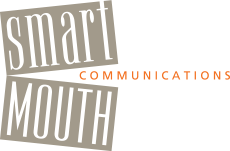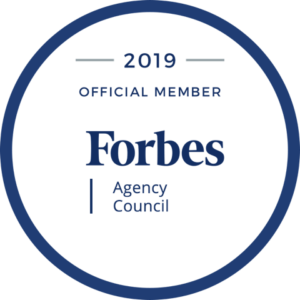SmartMouth Talks!
When it’s Time, it’s Time
Have you ever run out of time during your portion of a meeting, panel discussion, or during a presentation? And did you stop when your time was up, or did you keep talking because you had just one more really important point to make?
Facing Your Enemy
Raise Your Hands!
Did you know that using hand gestures gets your audience to pay attention better and also increases their ability to retain what they are hearing? Your hands provide the punctuation for your mouth. So interesting and so the opposite of what most speakers think is okay.
Here are some hand gesture tips:
Rubbing your palms together indicates the expectation of something positive.
Hands clenched together (with interlocking fingers) can indicate frustration, so be careful with that!
Making a steeple with your hands, fingers lightly pressed against each other, can look like thoughtfulness … or it can be read as superiority, so be forewarned.
Holding up your hand with the thumb and index finger together, with the other fingers resting in the palm, is used for emphasis by politicians and others engaging in persuasion (but be careful not to rub the thumb and index finger together, as that begins to suggest money and not in a positive way!).
Hands clasped behind the back have an unfriendly authoritarian feel; they’re not unlike crossed arms in terms of unfriendliness and should probably be avoided.
Arms open, palms open, arms and hands gesturing upward and toward the audience are all positive and engaging.
Height matters when it comes to your moving parts; keep your arms and hands at chest level or below to avoid blocking your face or being overly distracting.
In any case, big thumbs up on talking with your hands!
**Oh, and as a note, thumbs up or down are very powerful; they have been since Roman times when thumbs up or down meant life or death to a gladiator! Just sayin’ …
Dumb it Down
Cut to the Chase
Ready for a good summer shortcut to being really effective in a meeting or presentation? Here it is: Think like an audience member.
Laugh Track
When preparing a talk, don’t forget to build in the laugh track. You’re probably wondering if I mean that literally. The answer is yes and no.
Whatever Works is the Right Answer …
Interesting phenomenon. Yesterday I was working with a CEO who is filming a series of short video messages to his large and growing employee base. The content is good – simple, straightforward, memorable and repeatable, a little bit of humor, a little bit of info, a lot of focus on the audience. The delivery was a bit more of a challenge; we needed to get him to appear more natural and less stilted on camera. Hmmmm, I thought, let’s ditch the script and teleprompter and have him just chat with the camera. Sounds reasonable, rational, logical, right?
K.I.S.S.
“Everything should be made as simple as possible, but not simpler.”
– Albert Einstein
What Does It Say About You … ?
Game Plan: Your First 8 Seconds



